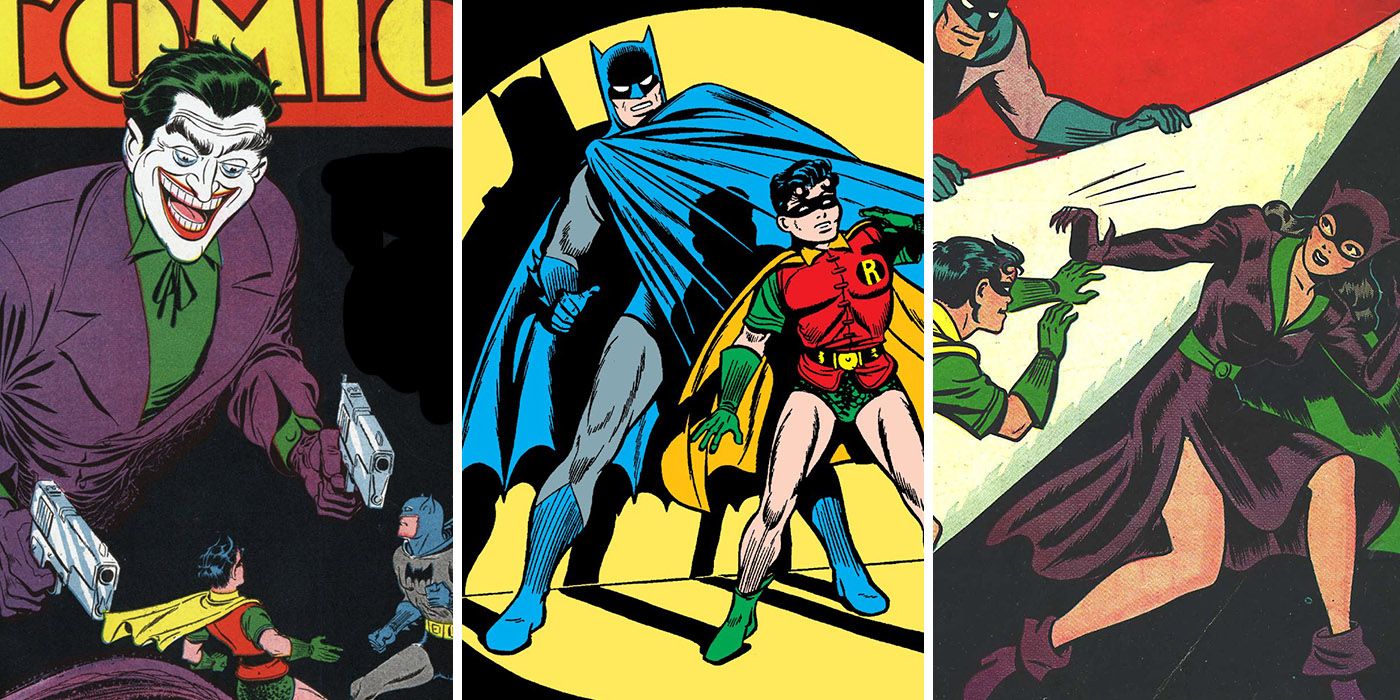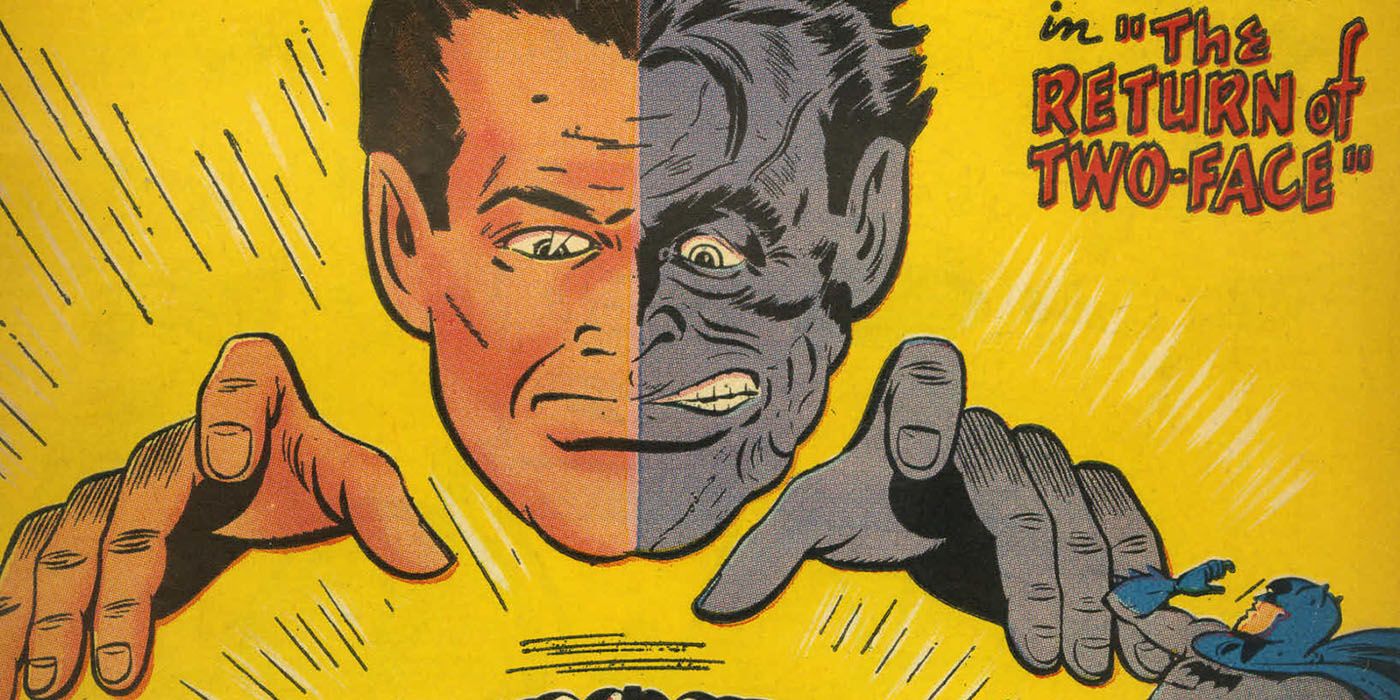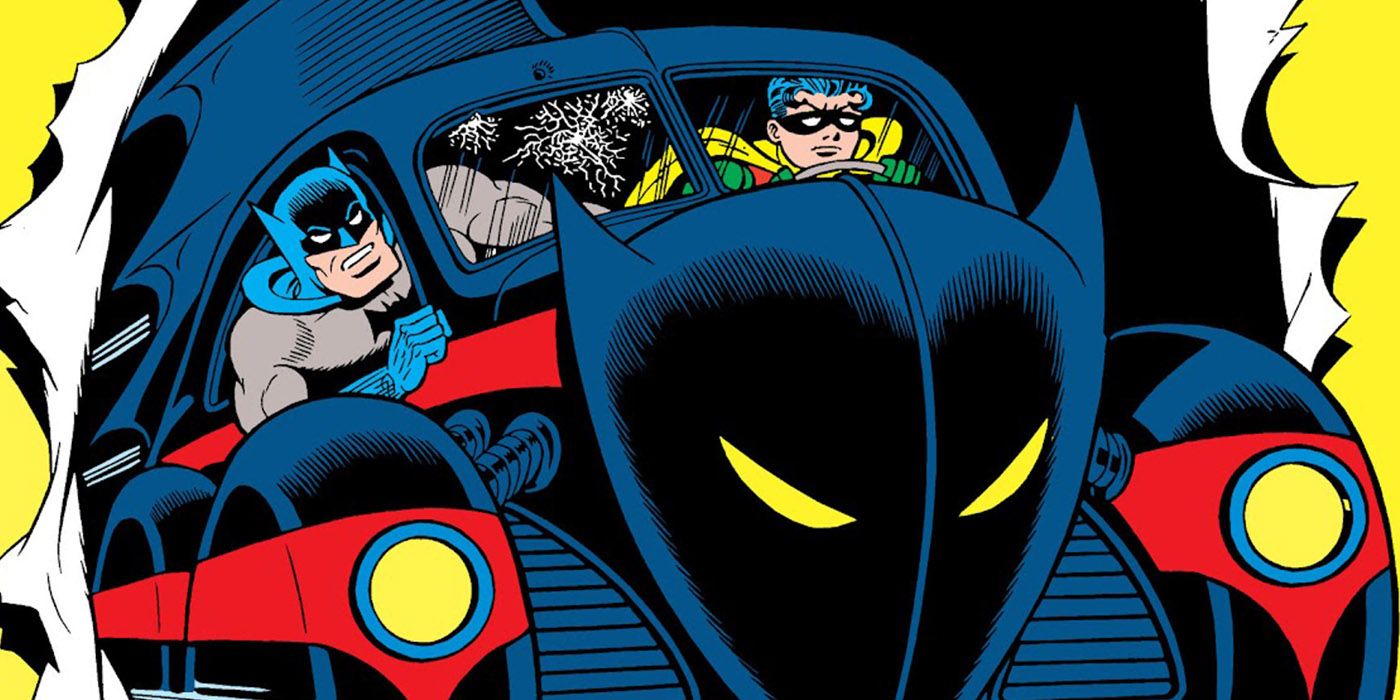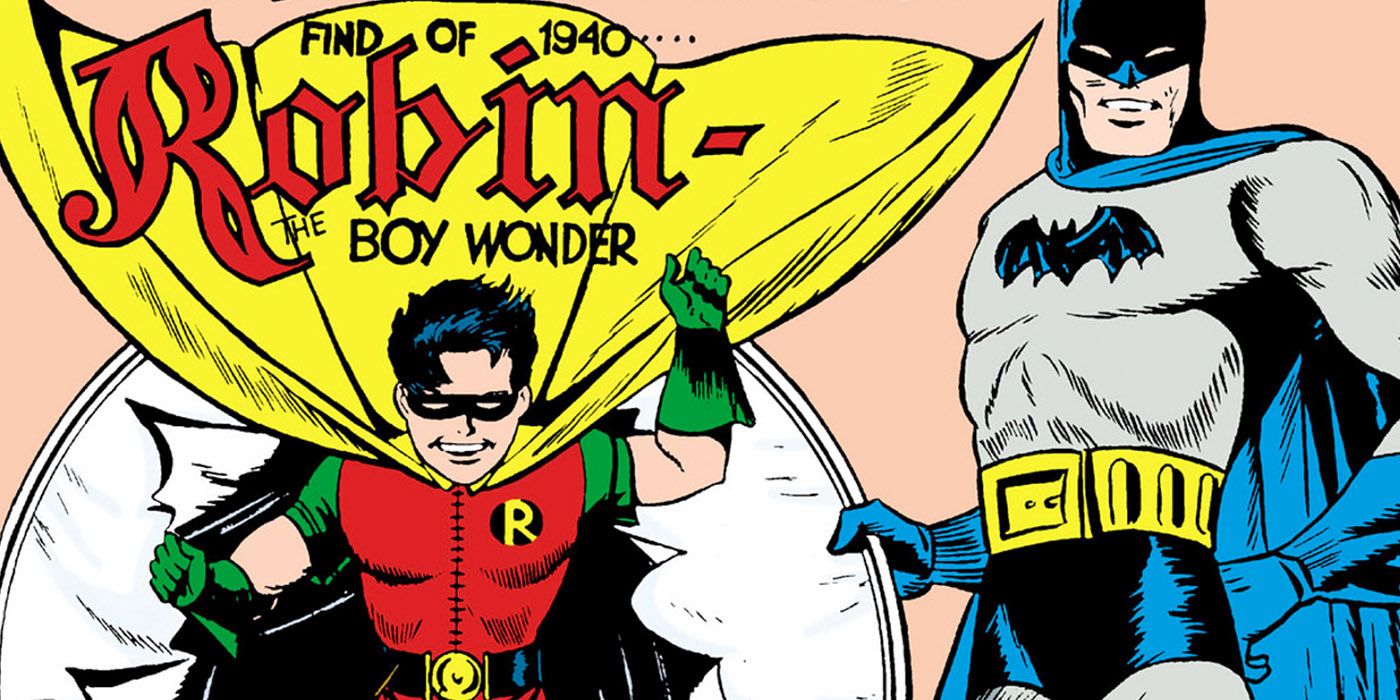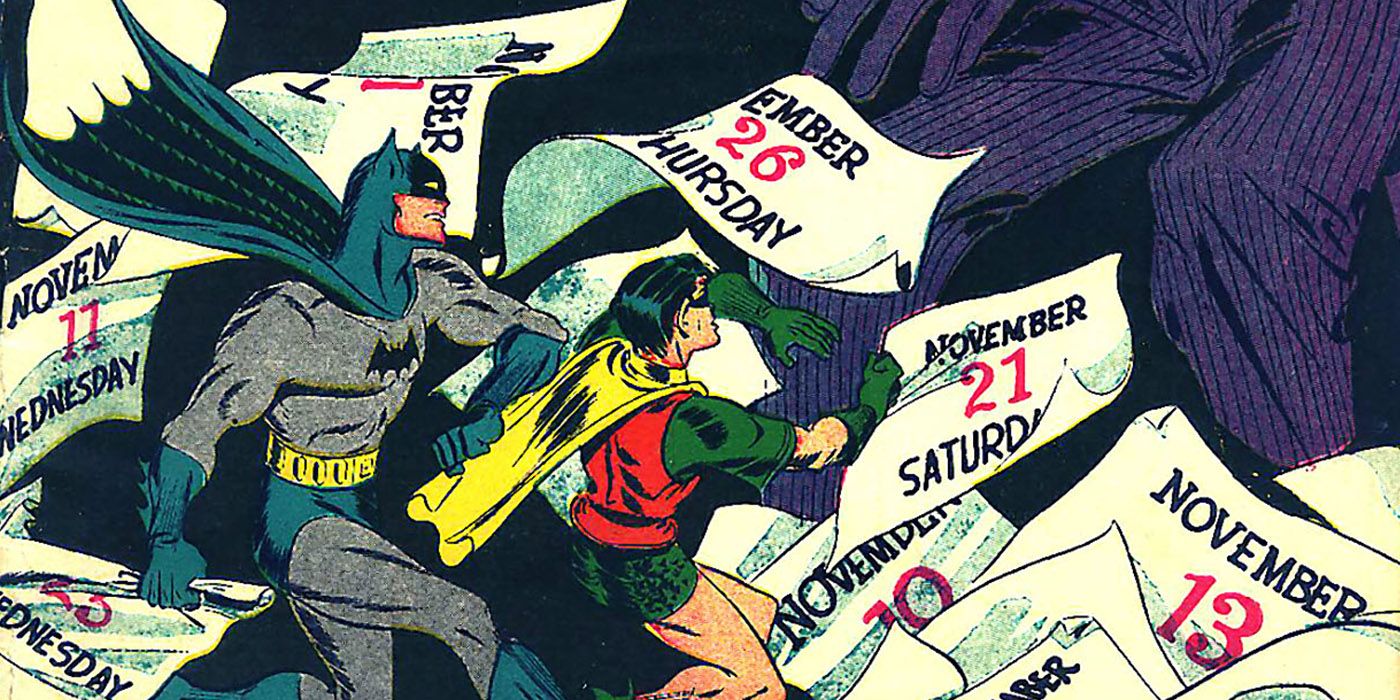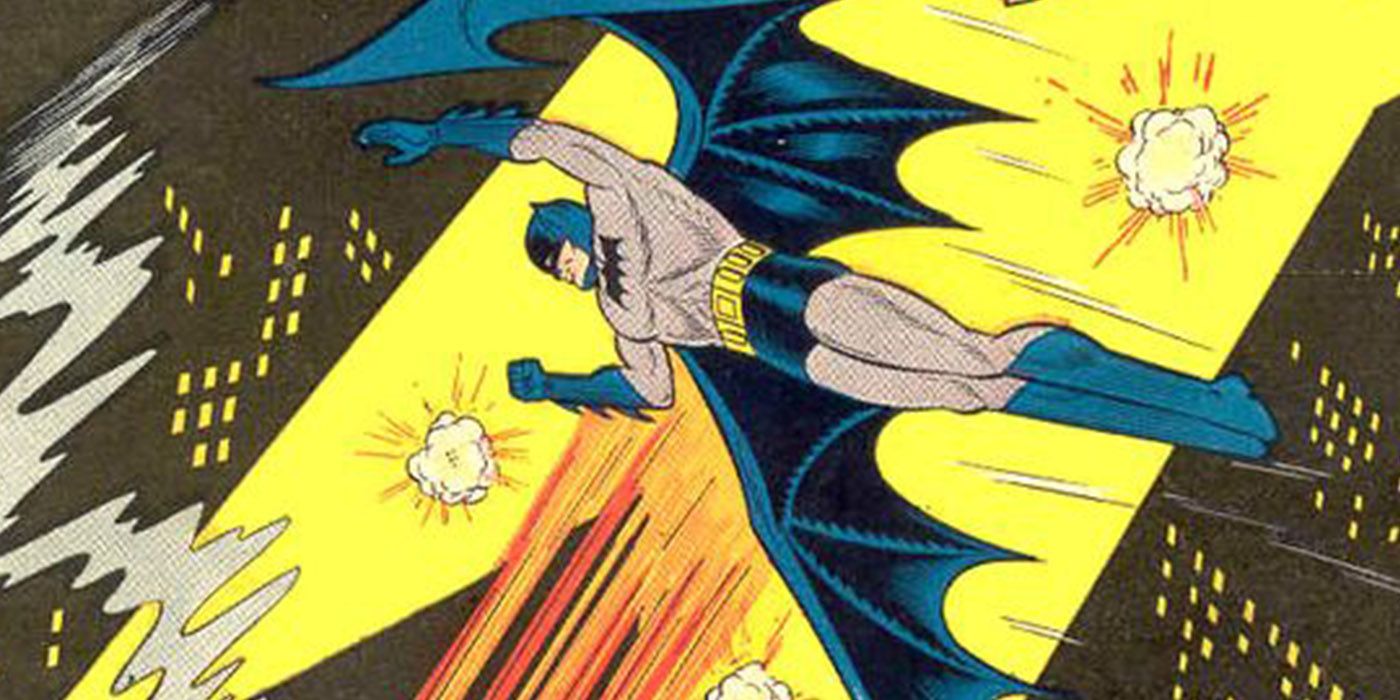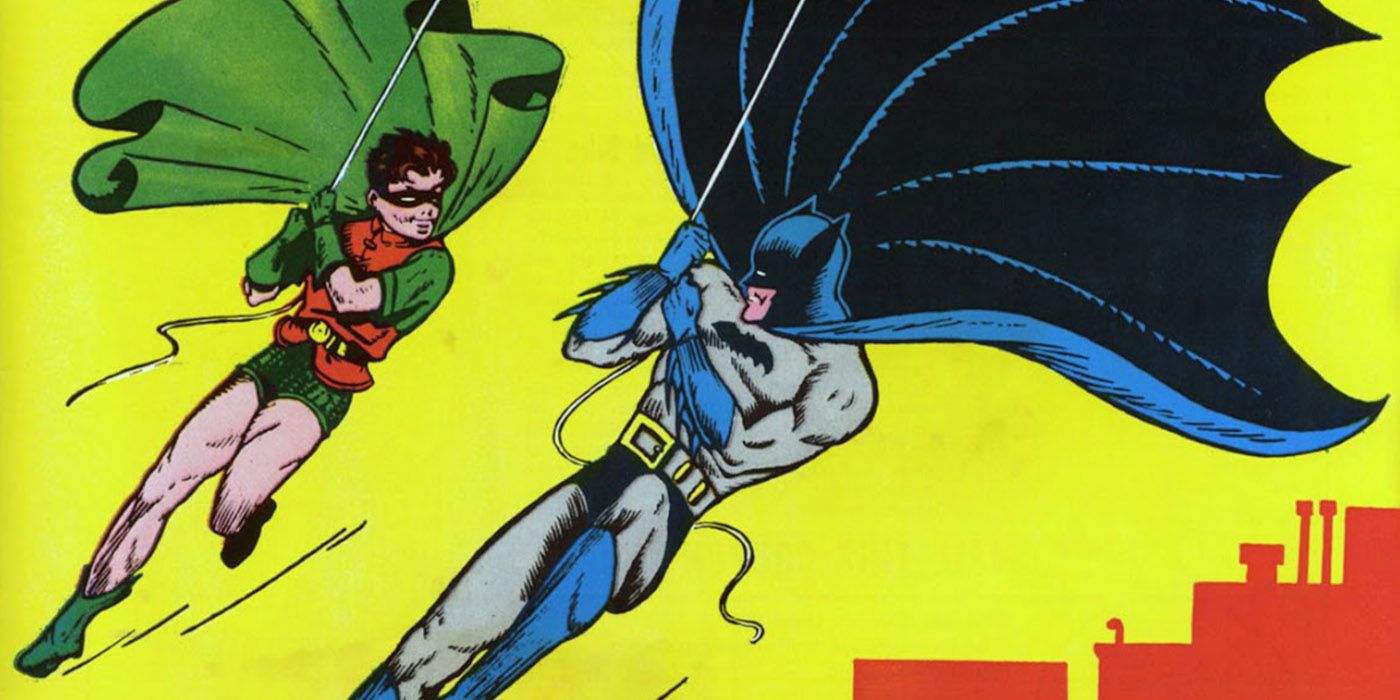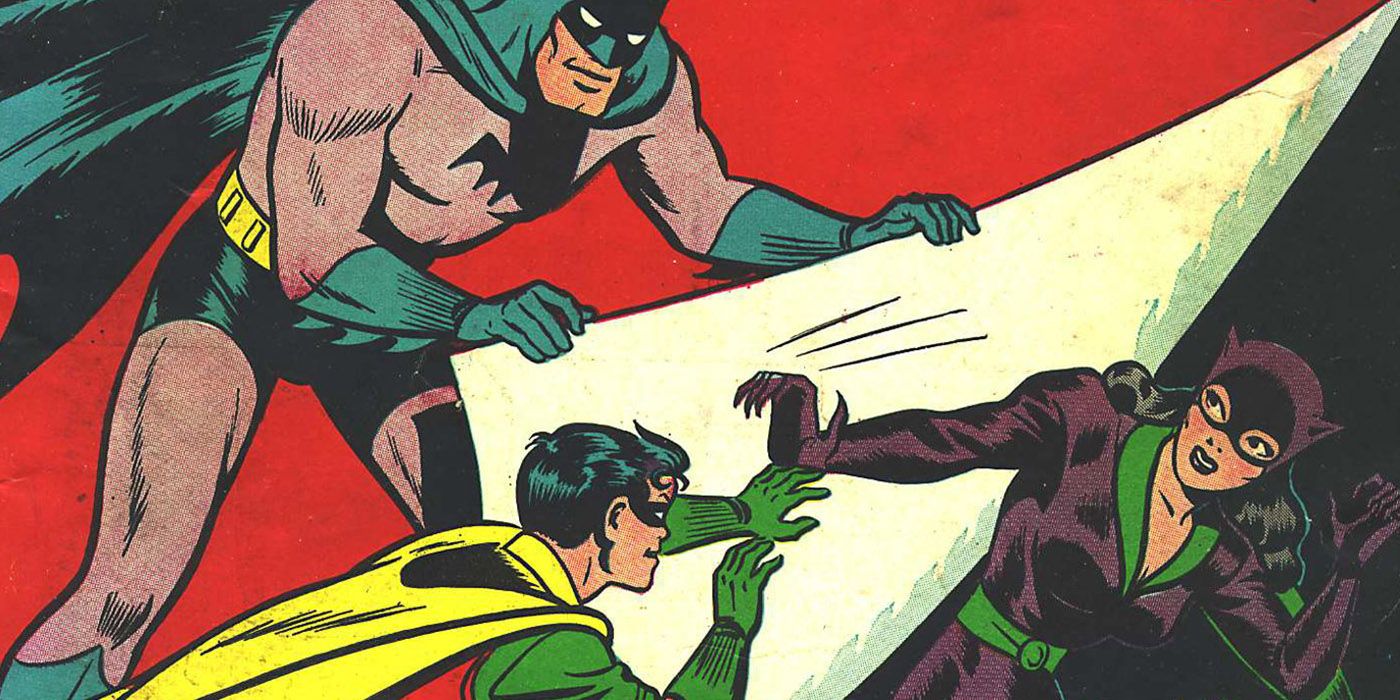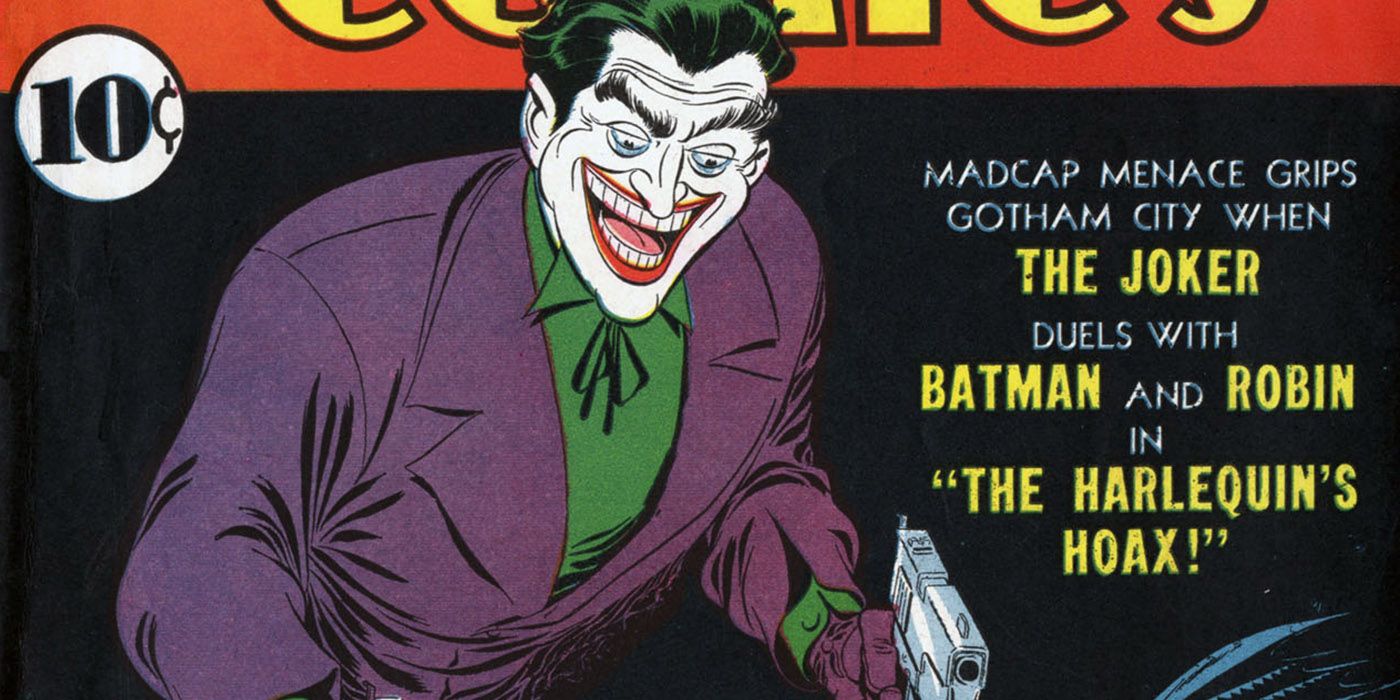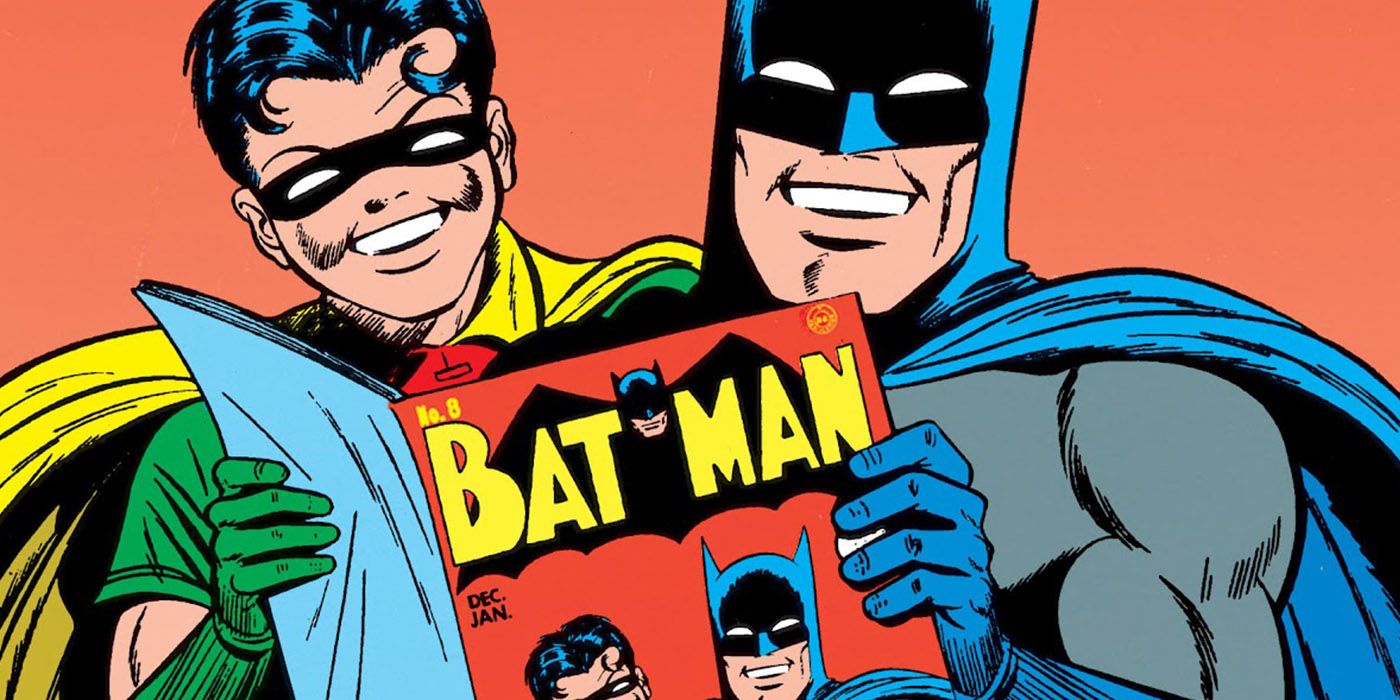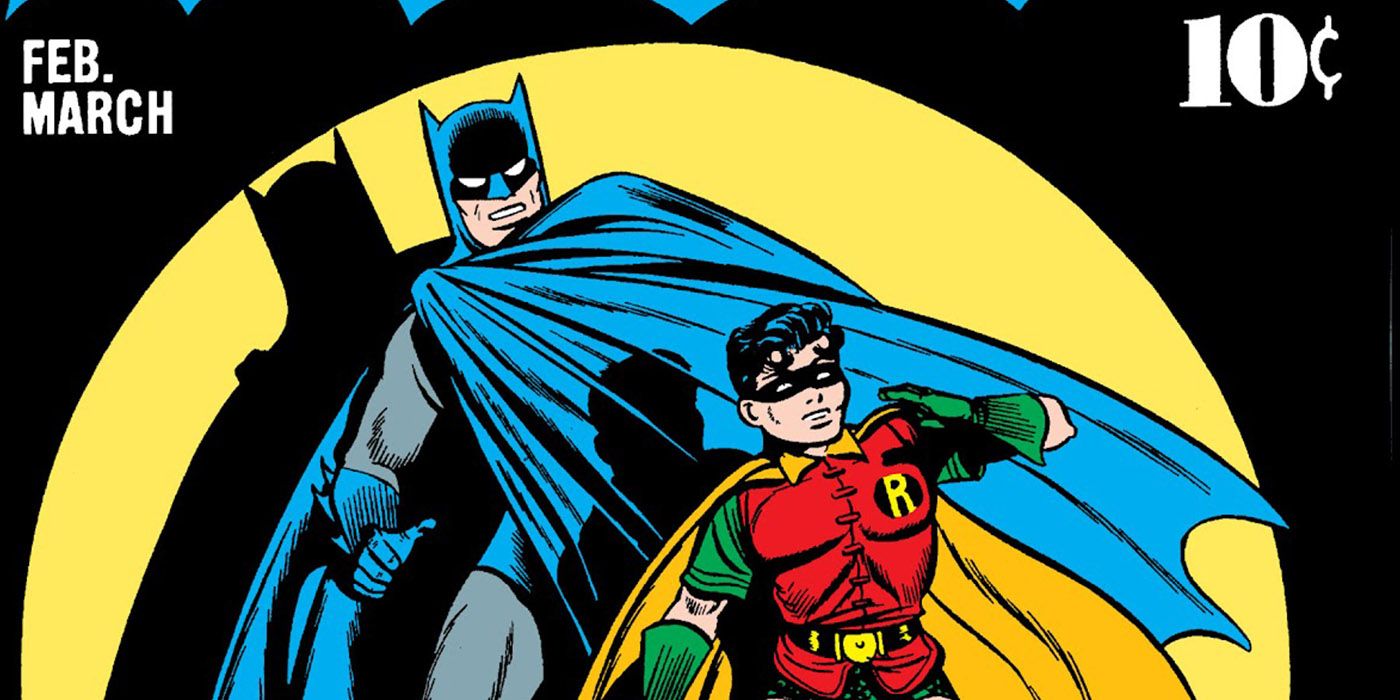Created by Bob Kane and Bill Finger, Batman made his historic debut in Detective Comics #27 in 1939, just one year after the debut of DC Comics' first icon, Superman. The Dark Knight was a stark contrast to the Man of Steel. Whereas Superman was a mighty symbol of justice and an alien from another world, Batman was a human being, a vigilante who defeated criminals in the shadows.
Some of Batman's greatest comic book covers, illustrated by legendary artists like Bob Kane and Jerry Robinson, were created in the superhero's first full decade of publication. With the success of Detective Comics and the release of the Batman series came the debuts of the Joker, Catwoman, Robin, Two-Face, and more.
10 Two-Face Returned In Batman #50
Harvey Dent, originally named Harvey Kent, first appeared in Detective Comics #66, created by Bob Kane and Bill Finger. Harvey, a.k.a. Two-Face was one of Batman's first major villains and has since stood the test of time, like many of Batman's original foes.
While Two-Face's several appearances in the '40s were good, his return in Batman #50, illustrated by Bob Kane and Charles Paris, was the most memorable. Two-Face's giant, half-scarred face looms over the shrunken Dynamic Duo as a giant silver coin spins between them.
9 The Batmobile Steals The Show In Batman #20
While the Batmobile first appeared in Detective Comics #27 alongside Batman, it was originally just a standard vehicle. Over the years, Batman's car would receive some impressive upgrades that would make it the most powerful weapon in his arsenal. The cover of Batman #20, illustrated by Dick Sprang, featured an older, stylized version of the Batmobile.
Robin drives the Batmobile as the windshield takes bullets. The car is black, with red accents, and a hood shaped like a bat's head. Some aspects of its design would be carried over into future cars, like the back tailfin, but the Golden Age Batmobile was much bulkier than the sleeker designs of the modern era.
8 Dick Grayson Debuts In Detective Comics #38
Robin, the Boy Wonder debuted in Detective Comics #38, published in 1940, just one year after Batman's own comic book debut. Dick Grayson is considered the world's first superhero sidekick, and some even consider him the greatest sidekick. His origins, including his time in Haly's Circus and the deaths of his parents, are presented in this issue.
The cover was illustrated by Bob Kane and Jerry Robinson. Robin makes his grand entrance as the cover itself promises he'll be the most sensational character of the decade. DC fulfilled that promise, as Dick Grayson was, and continues to be, one of the publisher's most popular characters.
7 The Joker Commits A Crime A Day In Detective Comics #71
In the 1940s, the Joker was a villain who committed colorful crimes that often involved riddles or clown-related themes. While his showmanship continued through the Silver and Bronze Ages, the Clown Prince of Crime grew more murderous. This change was addressed when multiple versions of the Joker were revealed in the Three Jokers limited series.
In Detective Comics #71, Joker decided to commit a crime for every day of the week, beautifully visualized on the cover by Jerry Robinson where Joker throws giant calendar pages at Batman and Robin. The Dynamic Duo believed that Joker's downfall was leaving clues to his eventual crimes. If they thought that was a mistake, wait until they meet the Riddler.
6 Batman Uses A Glider In Detective Comics #153
In films like Batman Returns and Batman Begins, Batman uses either his cape or what he calls his "Bat-Glider" to glide. Modern Batman stories have made this device fairly common as a way to keep Batman safe while traversing the high-rise buildings of Gotham, but back in the Golden Age, Batman's cape was just a cape and the idea of flying wasn't introduced until Detective Comics #153.
On the cover, illustrated by Dick Sprang, Batman flies over criminals using a modified version of his cape that allows him to glide. The whole event turned out to be a dream, but it sparked Batman’s imagination, planting the seeds for the gliding technology he would eventually use.
5 Batman Headlines His Own Comic Book Series
Detective Comics ran for 26 issues before the debut of Batman, but when The Dark Knight made his first appearance in issue #27, he took over the series and dominated DC Comics alongside Superman. Just one year after his debut, Batman received his own comic book series in spring of 1940. Drawn by Bob Kane and Jerry Robinson, this iconic cover shows the Caped Crusader swinging over rooftops with his new sidekick, Robin.
Batman's original design changed after the debut of Robin and the release of his own series. While he initially had a more gothic design that made him look like a creature of the night, his newer design was more fitting for a superhero. Batman would sport this design for the majority of the Golden Age.
4 Catwoman Eludes The Dynamic Duo In Batman #42
Catwoman first appeared in Batman #1, along with the Joker. Two of the most popular characters in DC Comics, and two characters who are integral to the Batman mythos, have been there since the beginning. The Catwoman of the Golden Age was a slightly different character than the one fans are familiar with now.
Catwoman was more like a classic villain, and would not become an ally of the Bat-Family for many years. The cover of Batman #42, created by Jack Burnley, Charles Paris, and Ira Schnapp, which shows Batman and Robin pulling back the cover to reveal Catwoman, was recreated by Stanley "Artgerm" Lau for the cover of Catwoman #12 in 2019.
3 Jerry Robinson Crafted A Classic Cover For Detective Comics #69
The cover art for Detective Comics #69 is so simple yet so memorable. A giant version of the Joker emerges from a genie lamp and points two pistols at Batman and Robin. The black background makes the Joker's vibrant purple jacket pop. It's no wonder the Joker became Batman's main villain. In the '40s, the Clown Prince of Crime appeared in many issues and was featured on beautiful covers like this one.
The cover image by Jerry Robinson was adapted by Bruce Timm in a variant cover for the 1000th issue of Detective Comics. Timm was the perfect artist to draw a "1940s" variant as his art style is so classic and timeless and matches the styles of Bob Kane and Jerry Robinson.
2 Batman & Robin Read Their Own Comic In Batman #8
Fred Ray and Jerry Robinson crafted some of the greatest Batman covers in the 1940s, and the concept for the cover of Batman #8 was brilliant. Batman and Robin hold the issue of the book in their hands, creating a descending set of the same image on subsequent covers. It's a slightly trippy and creative image.
Many of the Golden Age covers often depicted standard action scenes or recreated scenes from inside the book, but covers like Batman #8 stand out for their creativity and abstract designs. As is the case with many Batman covers, the best ones are often the simplest and most stylized.
1 Batman #9 Puts The Spotlight On The Dynamic Duo
Showing the Dynamic Duo in the spotlight, artists Fred Ray and Jerry Robinson illustrated one of the most iconic covers of all time for Batman #9. This image has been used on plenty of Batman merchandise, and the cover has been recreated many times by other comic book artists.
Norm Breyfogle and Adrienne Roy paid homage to Ray and Robinson's art on the cover of Batman #465, which featured Batman and Tim Drake in the spotlight after the events of "A Death in the Family." That cover was one of the best Batman covers of the '90s.

